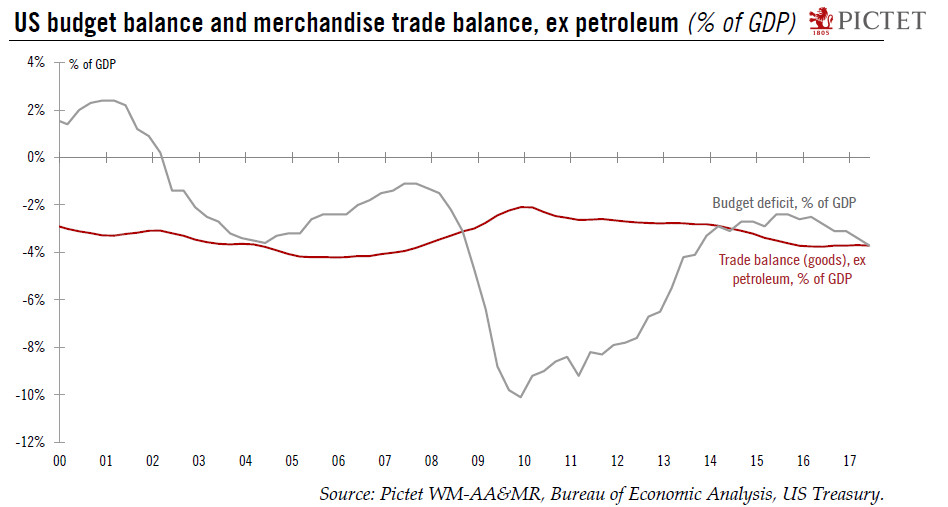The Trump administration is noticeably more focused on trade issues than on the ongoing deterioration in public finances.Second-quarter current account data from the US Bureau of Economic Analysis showed once again a sizeable trade deficit, particularly in merchandise trade excluding energy. The energy boom driven by shale gas and light oil has reduced the US’s dependency on energy imports, in turn improving the headline current-account reading. But the US is still a net petroleum importer to the tune of 0.4% of GDP, even though these imports have dropped sharply from 2.8% of GDP in Q3 2008.The improving energy trade picture masks a still-fragile non-energy picture. Excluding petroleum, the US trade deficit was 3.7% of GDP in Q2 2017, above the 2000-2017 average of 3.3%. It was ‘only’
Topics:
Thomas Costerg considers the following as important: Macroview, Trump budget plans, US budget deficit, US budget policy, US trade deficit
This could be interesting, too:
Cesar Perez Ruiz writes Weekly View – Big Splits
Cesar Perez Ruiz writes Weekly View – Central Bank Halloween
Cesar Perez Ruiz writes Weekly View – Widening bottlenecks
Cesar Perez Ruiz writes Weekly View – Debt ceiling deadline postponed
The Trump administration is noticeably more focused on trade issues than on the ongoing deterioration in public finances.

Second-quarter current account data from the US Bureau of Economic Analysis showed once again a sizeable trade deficit, particularly in merchandise trade excluding energy. The energy boom driven by shale gas and light oil has reduced the US’s dependency on energy imports, in turn improving the headline current-account reading. But the US is still a net petroleum importer to the tune of 0.4% of GDP, even though these imports have dropped sharply from 2.8% of GDP in Q3 2008.
The improving energy trade picture masks a still-fragile non-energy picture. Excluding petroleum, the US trade deficit was 3.7% of GDP in Q2 2017, above the 2000-2017 average of 3.3%. It was ‘only’ 2.1% of GDP in 2009. The current account deficit, coupled with an ongoing deterioration in the budget deficit (3.7% of GDP as well, according to Q2 data from the US Treasury), can only revive historic US fears about its ‘twin deficits’.
The Trump Administration has noticeably been focusing on the trade rather than the budget deficit, proposing some controversial remedies. Adopting a protectionist approach, the Administration is seeking to reduce imports and wants to revisit trade agreements, including the North America Free Trade Agreement. There is particular vehemence towards China, which US Trade Representative Robert Lighthizer called an “unprecedented” threat to global trade. At the same time, the Administration is particularly light on strategies for dealing with the budget deficit, believing – perhaps naively – that higher growth will take care of it.
